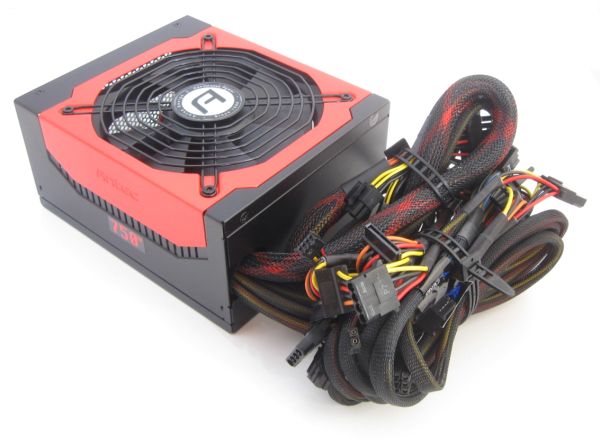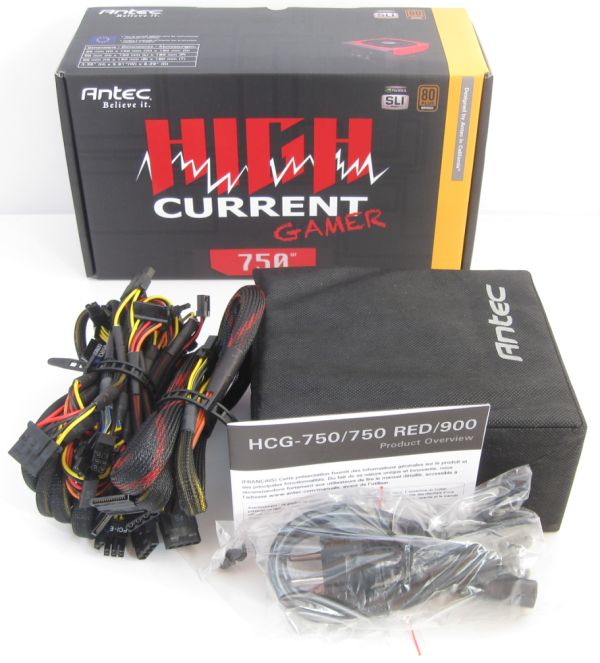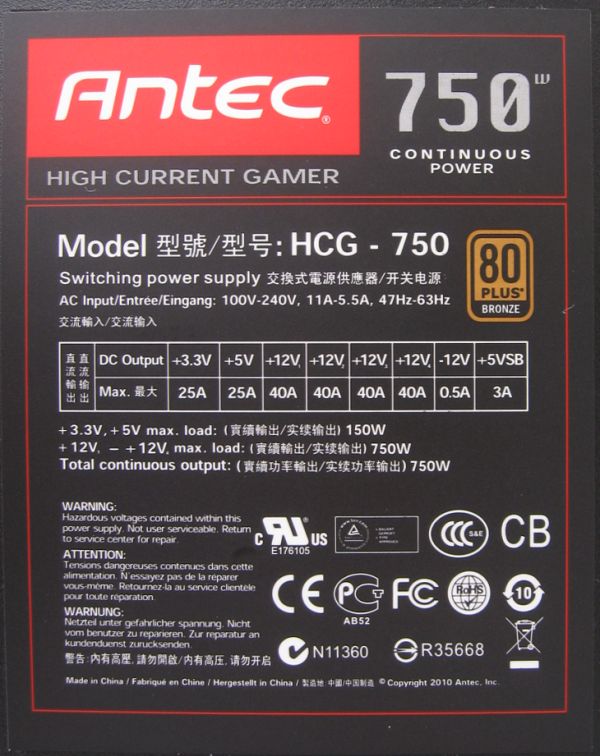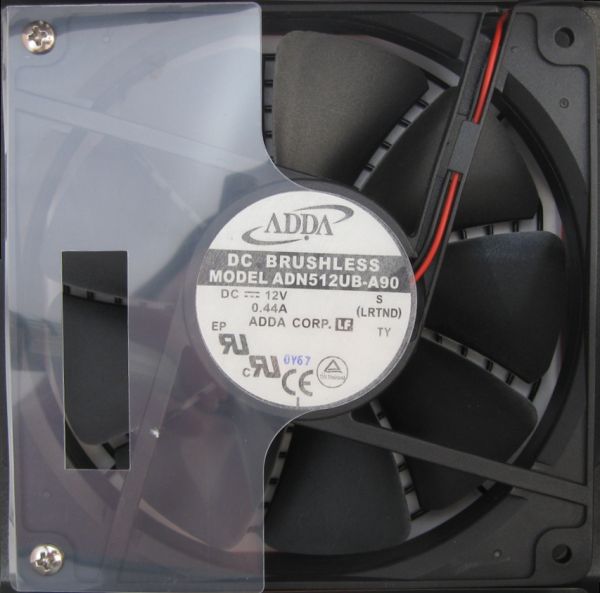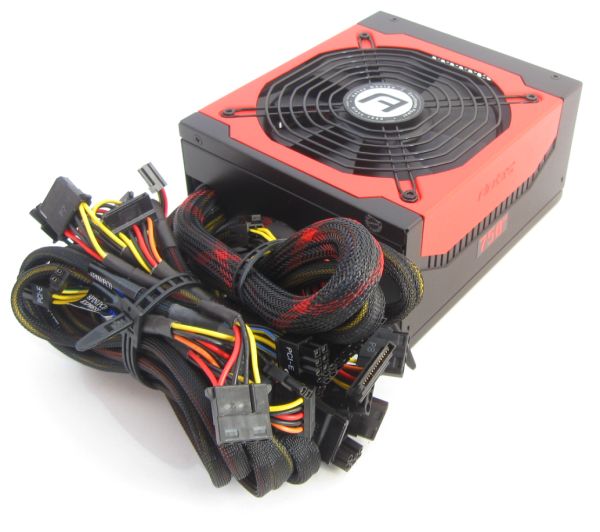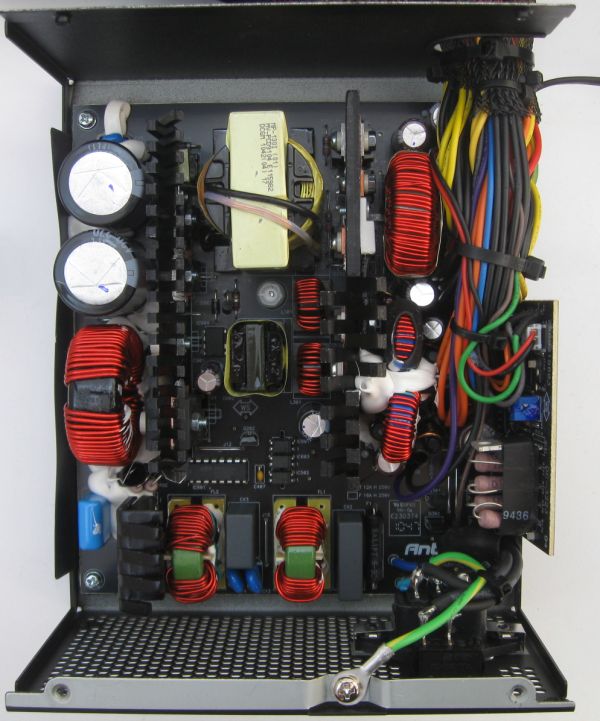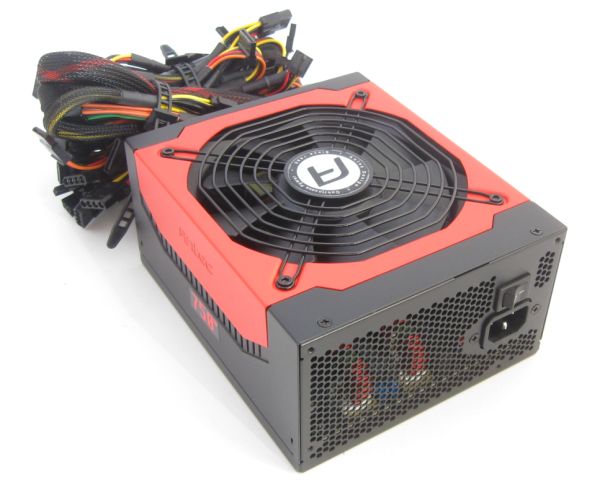
Original Link: https://www.anandtech.com/show/4258/antec-hcg-750-gaming-psu
Antec HCG 750W: Built for Gamers?
by Martin Kaffei on April 12, 2011 8:20 PM ESTMeet the Antec HCG-750
We've tested many Antec PSUs over the years, so this certainly isn't a case of "long time no see". However, most of the Antec products we've reviewed have been higher-end designs with unique features or abilities—for instance, there was the "sandwich" PCB in the HCP-1200 and the environmentally friendly design of the EarthWatts Green 380W. There's nothing out of the ordinary in the HCG data sheets other than the powerful +12V rails. The HCG series seems to represent most PSUs: it's ordinary and "boring". So what makes this PSU into an Antec product?
For starters, plenty of manufacturers have attractive power supplies, but the robust case and red highlights are at least unusual. We've seen designs like this in the higher cost/wattage PSUs like the 850W Enermax Revolution85+ and HuntKeys' X7 1200W. Now Antec brings this aesthetic to lower wattages and prices.
That's all well and good, but Antec cares about quality. They have chosen very expensive capacitors from Rubycon. In addition, as our Antec contact Christoph (Business Unit Manager at Antec) likes to say, "more is better", meaning that two main caps are better than one. The ball bearing fans also last longer than cheap sleeve bearing models, which is another minor upgrade. While these simple elements aren't unusual for PSUs in this price range, they do set our expectations and we're expecting a good showing from the HCG-750.
On the following pages we will see if the caps can reduce ripple and noise and if the fan runs quietly. Moreover, good results can help compensate for the non-modular cables, as they are a disadvantage for most customers. Let's begin with a closer look to its characteristics and delivery contents.
Package, Power Rating, and Fan
Like most PSUs, the package includes a power cord, four screws, and a small user manual. The PSU also comes with a separate cover to protect it from dust and scratches. Besides the 80 Plus Bronze and SLI-Ready logo, the HCG has 40A +12V rails, active PFC, all important safety functions, and a 5-year warranty. The High Current Gamer name is obviously in reference to the four 12V rails, which allow gamers to use the various cables without worrying about how much power they're drawing from any single rail. The housing is 180mm long, so you'll need enough space for it, and all cables are fixed.
If we trust those indications the load for one +12V rail could be up to 40A. The +12V rails are able to deliver the full output power in a peak situation while the continuous power is 750W. A specified temperature for the various ratings would have been nice, but we will verify the manufacturer information at room temperature. +3.3V and +5V are rated at 150W and/or 25A each. That's more than enough for a lot of HDD or SDD drives.
There's a large fan, but interestingly it's also covered by a large foil. We are not sure if this will help with airflow, but presumably Antec tested with and without the foil in place. The ADDA fan has the aforementioned ball bearings, with the exact model being ADN512UB-A90. This 135mm fan has nine blades and runs off 0.44A. It is not PWM controlled, unlike in most other Antec PSUs. The rated airflow of 82CFM should be enough to keep the interior cool.
Cables and Connectors
The cable sleeving for the 24-pin connector looks exactly like the sleeving from the EarthWatts Green 380W; the other cables use cheaper sleeving, but it's still better than nothing. The HCG-750 comes with a large selection of fixed cables, so again you'll want to make sure that your case has enough space you don't obstruct the airflow. If you're planning on running heavy benchmarking and/or overclocking without a case, obviously that's not a problem.
| Cables and Connectors | ||
| Fixed | Main | 24-pin 55cm |
| ATX12V/EPS12V | 4+4-pin 65cm | |
| PCIe | 2x 6/8-pin 50, 65cm / 2x 6/8-pin 50, 65cm | |
| Peripheral | 3x SATA 55-85cm / 3x SATA 55-85cm / 3x SATA 55-85cm | |
| 3x Molex 55-85cm / 3x Molex, 1x Floppy 55-125cm) | ||
Holy moly! This is what I call a very long CPU cable. In addition the HCG-750 has nine SATA connectors. Four separate PCIe cables would have been nice, but four 8-pin capable connectors on two cables is still more than enough to support dual-GPU SLI or CrossFire systems. If you happen to run a high-end card like the HD 6970 or GTX 580, each GPU requires two connectors so gamers will definitely want at least four PCIe connectors. Note that we wouldn't recommend trying to run quad-SLI or quad-CrossFire using GTX 590 or HD 6990 off a single 750W PSU, considering we can already hit 500-600W with a single GPU at stock clocks.
Internal Components and Topology
Crack open the casing and we see why the housing is 18cm long. While the two main heatsinks are very thin, Antec has more than enough room to cool every single component on the very large PCB. As mentioned in the introduction, Antec uses Japanese capacitors. There are two Rubycon USG caps for PFC and some Nippon Chemi-Con caps for the secondary side. Even +5VSB has a Rubycon capacitor for filtering.
Moreover we can see many components behind the entrance, except there's no MOV to provide passive over voltage protection. Most coils are fixed by glue—a common method which is effective if you don't use too much, as that would be bad for cooling. For switching and rectifying, we can see many Infineon transistors and other known brands. Overall the build quality is as good as expected.
Voltage Regulation and Quality
| +3.3V regulation | |
| Load | Voltage |
| 10% | +2.42% |
| 20% | +2.12% |
| 50% | +1.21% |
| 80% | +-0% |
| 100% | -0.30% |
| 110% | -0.80% |
| +5V regulation | |
| Load | Voltage |
| 10% | +2.60% |
| 20% | +2.40% |
| 50% | +1.40% |
| 80% | +0.60% |
| 100% | +-0% |
| 110% | -0.40% |
| +12V regulation (worst rail) | |
| Load | Voltage |
| 10% | +1.50% |
| 20% | +1.33% |
| 50% | +0.80% |
| 80% | +0.16% |
| 100% | -0.17% |
| 110% | -0.54% |
All rails are very close to the optimal value. They start with a small over voltage and end with results just under by 0.5% to 1.0%. Since this PSU has multiple 12V outputs we have selected the worst rail for the tables, as we always do. +12V is not too weak but we should keep in mind that our loads are 14A per rail, according to the ATX standard. This is far away from the rated maximum but more than enough to reach 750 watts output.
Ripple and Noise
| +3.3V ripple quality | |
| Load | Ripple and noise |
| 10% | 15mV |
| 20% | 15mV |
| 50% | 22mV |
| 80% | 27mV |
| 100% | 31mV |
| +5V ripple quality | |
| Load | Ripple and noise |
| 10% | 18mV |
| 20% | 19mV |
| 50% | 28mV |
| 80% | 33mV |
| 100% | 36mV |
| +12V ripple quality (worst rail) | |
| Load | Ripple and noise |
| 10% | 23mV |
| 20% | 29mV |
| 50% | 30mV |
| 80% | 34mV |
| 100% | 50mV |
The good results continue here. Both smaller rails have less than 40mV ripple and noise (50mV is the ATX spec limit). The +3.3V rail shows small transients and +5V has some negligible overshoots. +12V has higher absolute ripple, but as a percentage it's better than the other rails at only 50mV. While this power supply is no match for the HCP series, the price makes the difference and there's nothing to worry about.
Noise, Efficiency, and Power Factor
| Sound Pressure Level | |
| Load | dB(A) |
| 10% | 19 |
| 20% | 19 |
| 50% | 20 |
| 80% | 25 |
| 100% | 35 |
| 110% | 38 |
Like most Antec PSUs this one gets very loud once we near 100% load. However, most PCs don't (and shouldn't) reach that level so the sound pressure during low to moderate loads is more important. Most "gamer" systems also have GPUs that generate a lot of heat, so an active cooled PSU is very welcome here. At a load of 50% (~375W) or less, the HCG-750 is nearly inaudible in a closed PC; 20 dBA is almost certainly less noise than most GPUs will generate, and they would likely be necessary to reach such a load.
Efficiency and PFC
| 115VAC, 60Hz | ||
| Load | Efficiency | PFC |
| 10% | 81% | 0.946 |
| 20% | 85% | 0.959 |
| 50% | 86% | 0.974 |
| 80% | 83% | 0.991 |
| 100% | 81% | 0.996 |
| 110% | 80% | - |
| 230VAC, 50Hz | ||
| Load | Efficiency | PFC |
| 10% | 82% | 0.868 |
| 20% | 87% | 0.899 |
| 50% | 88% | 0.933 |
| 80% | 86% | 0.944 |
| 100% | 85% | 0.953 |
| 110% | 84% | - |
We have two different charts for efficiency and PFC, as some readers expressed interest in 230VAC measurements. The efficiency is good for an 80 Plus Bronze PSU, reaching up to 86% on 115VAC, though our 81% result at full load on 115VAC is actually slightly below the required 82%. More importantly, we see greater than 80% efficiency at low loads, which isn't always a given even with high-end power supplies. PFC is also good on 115VAC. As is always the case, on 230VAC PFC drops quite a bit and we'd like to see better results. On the other hand, efficiency on 230VAC goes up several points, easily qualifying for a Bronze rating and nearly reaching Silver levels. Not bad for a moderately priced PSU.
Conclusion: Good Performance and Value
It's not easy to find fair closing words for this power supply. On the one hand the Antec HCG-750 is a non-modular PSU with a moderately high price--we're within $12 of 80 Plus Silver 750W and with rebates you can get other 750W 80 Plus Bronze PSUs for just $80. On the other hand, the efficiency is decent for an 80 Plus Bronze model, the voltage regulation and ripple are good, and overall we really don't have any complaints. This PSU seems to be good for gamers with overclocked PCs and one or two high-end GPUs, who may not care to spend the extra $50 to reach the next echelon of features, quality, and performance.
The HCG-750 uses Japanese capacitors from Rubycon and Nippon Chemi-Con, there's a lot of space for cooling and airflow, and the result is reasonably quiet operation at most loads. The PCB material could be better and there is no MOV. Apart from that the EMI filtering is well equipped and most transistors are from well known brands like Infineon. The 135mm ADDA fan is a good choice for cooling.
The HCG-750 generates just 25dB at loads up to 80%, which is where most users will run such a power supply. At 100% load you definitely hear the PSU, and while 38 dBA isn't the worst result we have ever seen it's still very high. The important thing is that the PSU is almost silent below 50% load.
In terms of voltage stability, the worst +12V rail measures 11.96V during our overload scenario. +5V and +3.3V are also close to their optimal values, and even +5VSB is always above 5.02V. The ripple and noise results with no more than 50mV on +12V are well within ATX limits. Power factor could be higher with 230VAC input but up to 88% efficiency with this voltage is satisfying. At 115VAC this PSU reached up to 86%, so it meets the requirements for an 80 Plus Bronze product.
The cables are nice and long, with a 65cm ATX/EPS12V CPU cable and a 55cm long 24-pin cable. There are four 6/8-pin PCIe connectors on two cables and nine SATA connectors on three cables. In addition this PSU has six Molex and one mini-Molex (i.e. FDD drive connector), so there are plenty of connections for most PCs. Perhaps the cable sleeving could be better since "Gamers" might care about appearances a bit more, but if you're not using a windowed case it won't matter. The coating and thickness of the case are excellent, providing a very robust feel, and the 5-year warranty and support are welcome.
Most of us prefer PSUs similar to this, only with at least 80 Plus Silver rating and modular cables. You can get that with the Enermax Revoltion85+, but Enermax pricing on that PSU continues to be quite high and you have to move up to 920W. The lower price, moderate wattage, stable rails, and overall performance are good reasons to prefer Antec's HCG-750. Antec may not be putting any real innovation into this particular product, but it doesn't have any serious flaws either and would make a great choice for your next high-end PC. And if you're planning something less extreme, you can stick with PSUs rated at less than 500W.

